Articles
Archive of articles posted to the website.
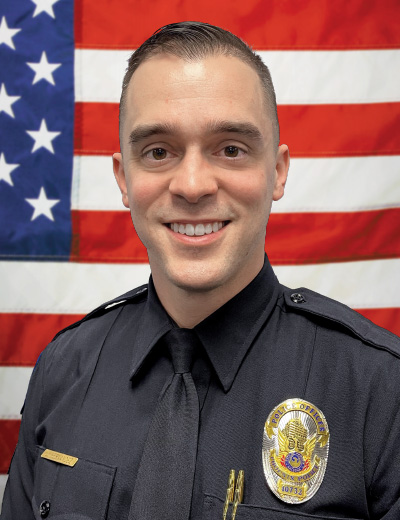
Treasurer
jhernandez@azplea.com
As most of you are aware, we recently completed our contract negotiations with the City of Phoenix for the 2023–2024 cycle, and the membership has ratified the agreement. Contrary to what you might have heard, a single-year contract was not an idea presented by the City. Instead, it was put forth by President Darrell Kriplean in collaboration with IAFF President Brian Willingham. The motivation behind this is that the City’s revenue is one year behind, so we know what money was available. The city manager is very conservative with the revenue estimates, so it did not make sense to lock us into a second year with few to no monetary increases.
We don’t anticipate that one-year contracts are going to be the norm moving forward, but we will always consider alternatives to ensure that we are placing ourselves in the best position possible to negotiate pay and benefits for the membership.
During the months that negotiations took place, we were able to get some items updated that had not been changed or adjusted in decades. While there were some difficult times during the process of negotiating, we were able to secure benefits that we believe are significant improvements for the membership.
We were able to get some items updated that had not been changed or adjusted in decades.
- One-time, non-continuous payment of 5% to be paid out in the first full pay period in August. We attempted to keep this place in December as in previous years, but the City wanted everything to be in unison with other labor groups.
- A 2.16% base wage increase
- An increase in standby pay to $100 for non-workdays and $80 for workdays
- Patrol shifts of 4-10s staying untouched for the next contract cycle. Thank you to everyone who completed the survey, and we heard you loud and clear in regard to this issue. The City understands that this is going to be our stance going forward, with no intention of discussing it further.
- DRE and phlebotomist premium pay up to $15 extra an hour while conducting the duties
- Increase in shift differential by $2 for nights and $1 for weekend
- Sick leave conversion on retirement:
- 1–899 hours: 100% base wage for 50% of hours accrued
- 900–1,285 hours: 100% base wage for 65% of hours accrued
- 1,286–1,713 hours: 100% base wage for 80% of hours accrued
- 1,714-plus hours: 100% base wage for 100% of hours accrued
- 80-hour vacation sellback rather than the 40 hours as in years past. This will still be the first check in December.
Negotiating a contract can be a complex and difficult process when binding arbitration is not available to be used. With hard work, persistence and having good working relationships with the City, the Association was able to get these benefits secured. In the next few months, I will be sending out a survey that will be used in the upcoming contract negotiations for the next cycle. I would appreciate it if you would take the time to complete the survey. This survey allows you, the membership, to communicate with us about what you believe is important to be negotiated during the contract cycle. I look forward to continuing to work for you in advocating for the benefits you deserve.
If you have any questions, I can be contacted at the PLEA office or by email at jhernandez@azplea.com.

The month of May is a sacred time when peace officers, families and supporters can come together to remember and pay tribute to the brave men and women who gave their lives in the line of duty during the past year and throughout our nation’s history.
This year’s National Police Week ceremonies, held May 11–16, carry special significance for PLEA and the Phoenix Police Department as Sergeant Thomas Craig (EOW September 3, 2021) and Officer Phillip Vavrinec Jr. (EOW September 22, 2021) are added to the National Law Enforcement Officers Memorial. Both officers tragically passed away from COVID-19 and were added to the Arizona Peace Officers Memorial in 2022. This year, their sacrifice will be recognized in front of thousands in our nation’s capital.
Members of PLEA’s leadership team are traveling to Washington, D.C., to honor our brothers and the rest of our nation’s heroes. We will never forget Sergeant Craig, Officer Vavrinec Jr. and all those who made the ultimate sacrifice in the service of their communities.
Fifth Annual PLEA Charities Superhero 5K Raises Money for Kids in Need
With the fifth annual PLEA Charities Superhero 5K being Hulk-themed, actors from Put on the Cape (POTC): A Foundation for Hope portrayed the Hulk and She-Hulk, as well as Superman, Batman, Supergirl, Gamora, Harley Quinn, Poison Ivy, Captain Marvel and many others for this sold-out event that raised nearly $6,000 for the Southwest Family Advocacy Center (SWFAC).
Created by Phoenix Police Officer Sean Reavie, POTC started in 2019 with the goal of raising awareness and donations for victimized children with a series of superhero-themed events benefiting family and child advocacy centers across the Valley and his home state of Michigan.
With PLEA Charities sponsoring the first annual Superhero 5K, Reavie adopted the SWFAC so it could receive proceeds. Since 2019, Reavie’s foundation has donated more than $60,000 to SWFAC, with $28,000 alone coming from the annual 5K event.
“I have to thank PLEA Charities and their involvement over the last five years,” Reavie says. “They supported me from my first event and changed the lives of thousands of abused children in the process.”
PLEA Secretary John Maxwell and President Darrell Kriplean helped set up a tent next to POTC registration and handed out water, medals and T-shirts to participants. This race included a grandmother running with her 10 grandkids, couples pushing their babies in strollers, toddlers decked out as baby versions of superheroes, a fully uniformed MSCO deputy, an entire class of Avondale Police Department cadets and even family pets gleefully taking part.
The event, held during the Avondale KidFest, was supported by the Avondale, Buckeye and Goodyear police departments, UPS and Honor Health, which signed up dozens of runners in the competition for the Champions Cup, an award Reavie created to encourage friendly competition and bragging rights.
“Buckeye P.D. unseated Avondale P.D. as the winner this year,” Reavie says. “We sold out Wednesday before the event and still had an additional 48 runners sign up who just wanted to help.”
The support of PLEA Charities has meant a great deal to Reavie, who notes that POTC has won numerous national awards for philanthropy and has donated approximately $500,000 to multiple family advocacy centers in the Valley, supporting more than 10,000 child victims of abuse.
“PLEA Charities was the first to donate money to my cause in 2015 when I just did a small donation drive called Superhero September,” Reavie says. “Now, we hold events year-round across Arizona and Michigan.”
PLEA Charities was there at the beginning, presenting him with a donation of $1,500.
“They never missed a chance to support me,” Reavie says. “Come September, PLEA is sponsoring the ninth annual Superhero Shopping Spree, my legacy event. I cannot thank them enough for the support financially and for me personally over the years.”
“It takes a village to heal a victim,” SWFAC director Reem Constantine says. “Sean Reavie and PLEA Charities, as well as their passionate team, put words into action every day. They built a community of support that inspires children and adults alike to spring into action and give generously their time and hearts for a survivor of abuse in need.”
Reavie, who is currently working as a school resource officer at Greenway Middle School, adds that some major announcements are coming in the next few months involving new events and more impact through his charity.
“Success, to me, means other people are better off because of something you did,” Reavie says. “The team at PLEA Charities has helped me reach so many victims of abuse, and we will continue to do great things together.”
Follow POTC on Facebook (facebook.com/Putonthecape) or visit its website at putonthecape.org.
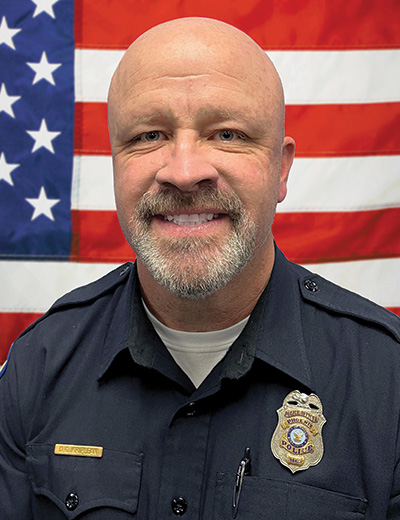
President
dkriplean@azplea.com
PTSD is a greater cop killer than all the guns ever fired at police officers” (Allen Kates from his book, CopShock). This may be surprising to some as PTSD is often believed to be specific to our military personnel returning from war-torn regions of the world. PTSD, however, afflicts police officers at an astonishing rate. Most go undiagnosed as we try to make sense of the feelings we are having that sometimes resort to compulsive or addictive behaviors in an attempt to self-medicate. While military personnel are expected to suffer from it and are encouraged to get treatment, police officers are often expected to “tough it out.”
Consider this: Police officers are called to perform during the most tragic times in a person’s life. There are the unending calls for service involving domestic violence, child abuse, serious injuries and fatal car crashes. These calls chip away at us year after year until, one day, it becomes too much for us to handle. Retired LAPD Detective William Martin stated that “Our responses to violence are so subtle and long term that we do not realize what is happening to us until we begin to lose what is most important in our lives: our families, friends, health, spirituality, honor, commitment and sense of self-worth.”
Think about your own life. Are you more irritable with your children or spouse than you were at the beginning of your career? Do you prefer to stay home rather than spend time with friends? Are you consistently taking more risks at work? If you self-reflect and can detect these differences, you may have symptoms of PTSD. We all understand that an officer involved in a shooting may suffer symptoms of post-traumatic stress. What we, and everyone else, need to accept is that the events we are exposed to on a daily basis could have just as dramatic an effect on us.
These calls chip away at us year after year until, one day, it becomes too much for us to handle.
Many studies have been performed regarding police and PTSD, and they have shown that while hypervigilance is good for an officer to have, it can also be a subtle sign of PTSD. Think about the last time you took your family out to eat and had to sit in a position with your back to the wall, or at the very least, had to have a clear view of the front door and most of the patrons. We are constantly aware of people’s hands, especially when they are within five to seven feet. Now, I am not suggesting that because we all tend to have these “habits” we all suffer from PTSD, but I will say that it can be a symptom of something deeper.
A single traumatic event is enough to cause the disorder in some officers. If that officer then applies for workers’ compensation, it is typically easy to associate the event with the injury. The challenge becomes when you are exposed to a series of microtraumas over a period of years. No one knows how many of these we can absorb before the bucket is full and the next microtrauma is one too many.
On April 23, 2018, then-Governor Doug Ducey signed HB 2502, also known as the Craig Tiger Act, into law. This was a huge step in acknowledging the trauma police officers endure. It guarantees up to 36 visits with a licensed professional. In addition, the appointments will be during your duty hours. The sooner trauma is treated, the more likely it is that the individual suffering can return to a healthy way of life, which translates into a healthier and happier employee.
Workers’ compensation laws are very difficult when it comes to repeated exposure to trauma. In fact, a case was recently decided by the Arizona Supreme Court that ruled that a diagnosis of PTSD due to a cumulation of trauma over time is not compensable (France v. Industrial Commission of Arizona). Unless an officer experiences a single traumatic incident giving rise to PTSD symptoms, such as a gunshot wound, the claim will be denied.
Keep in mind that the Industrial Commission of Arizona requires a claim to be filed within one year from the date of injury or when the injured worker became aware of the condition.
This article is simply the tip of the iceberg. The goal is for officers to get help somehow, someway. If the officer does not realize what is going on, a family member or friend may recognize behaviors that could be associated with PTSD and help the officer seek help before it is too late. There are local organizations that can provide assistance. One is named Post Incident Stress & Trauma in Law Enforcement, which can provide peer support and information on training, advocacy, family support and treatment options. More information can be found by visiting their website at pistle.org. The website also features a PTSD checklist and symptoms of acute stress checklist. Under the Shield (Undertheshield.com) is another organization where help can be found. Bulletproof (bulletproof.org) and Copline (Copline.org) are both organizations created to assist officers anonymously. There is a multitude of books out there as well. One specific book that I read and found to be very resourceful is CopShock by Allen R. Kates. You can also contact the Employee Assistance Unit. Everything you tell them is held in the strictest confidence.
Know that you are not alone in this, and reach out if you find yourself in need. There is no shame in asking for help. If you have any questions or if I can be of help in any way, please contact me at the PLEA office or at dkriplean@azplea.com.
Officer Denise Bruce-Jones Shares Her Inspirational Story After Bravely Fighting Back From Being Shot
 PLEA Secretary John Maxwell had the opportunity to sit down and talk to Denise Bruce-Jones, who was shot in the line of duty on April 14, 2022, at 10:30 a.m. while investigating a call for service involving an individual who was suicidal. She was shot in the abdomen, and she is still recovering today from her injuries. She is glad to be here with her friends and family. This is her story. Note: Some of the details could not be discussed due to ongoing criminal litigation.
PLEA Secretary John Maxwell had the opportunity to sit down and talk to Denise Bruce-Jones, who was shot in the line of duty on April 14, 2022, at 10:30 a.m. while investigating a call for service involving an individual who was suicidal. She was shot in the abdomen, and she is still recovering today from her injuries. She is glad to be here with her friends and family. This is her story. Note: Some of the details could not be discussed due to ongoing criminal litigation.
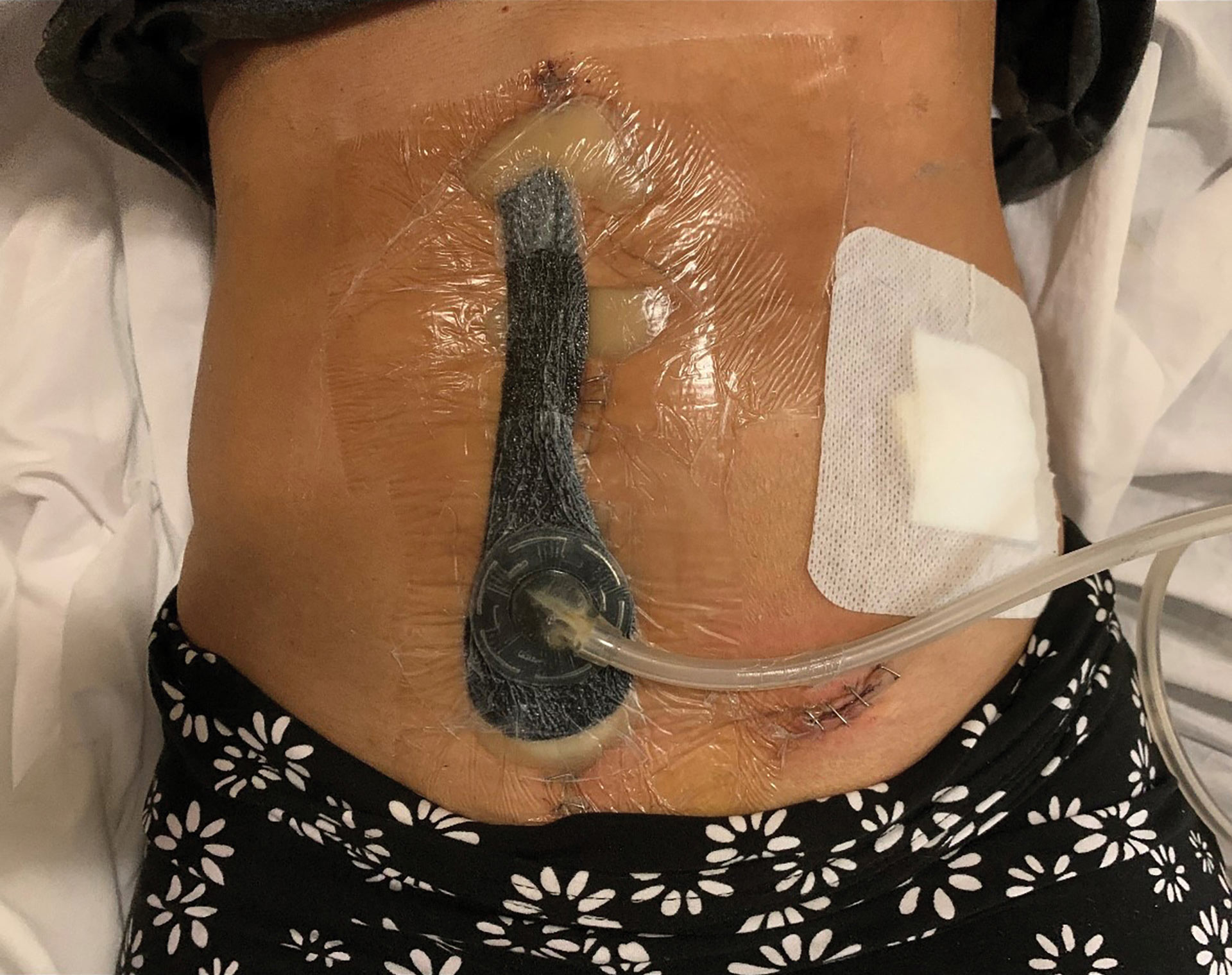 Denise’s Story
Denise’s Story
On April 14, 2022, Denise Bruce-Jones was working a patrol shift when she responded to an emergency radio call (hot call) of a suicidal subject. She and Officer Mazin Toma were attempting to get a Crisis Intervention Team (CIT) officer to respond to the call with them. Denise arrived on the scene first at a gas station near Cave Creek Road and Beardsley, several blocks from the caller’s residence. She spoke with the female subject, who had placed the call to 9-1-1 about her boyfriend being suicidal.
Officer Toma arrived shortly after at the same location as Denise was contacting the female. Officer Toma walked away to speak on the radio to coordinate additional resources. The female said that she and her boyfriend had been fighting for the last couple of days, and he shot a gun into the ceiling of their home the day before, but she never called the police to report the incident. Denise recognized her from prior calls for service. The female also said that she ended up sleeping in her car that night on the property. She was woken up by her boyfriend knocking on the window, and the argument started again. She told him that she was leaving him, and he responded that he was going to kill himself.
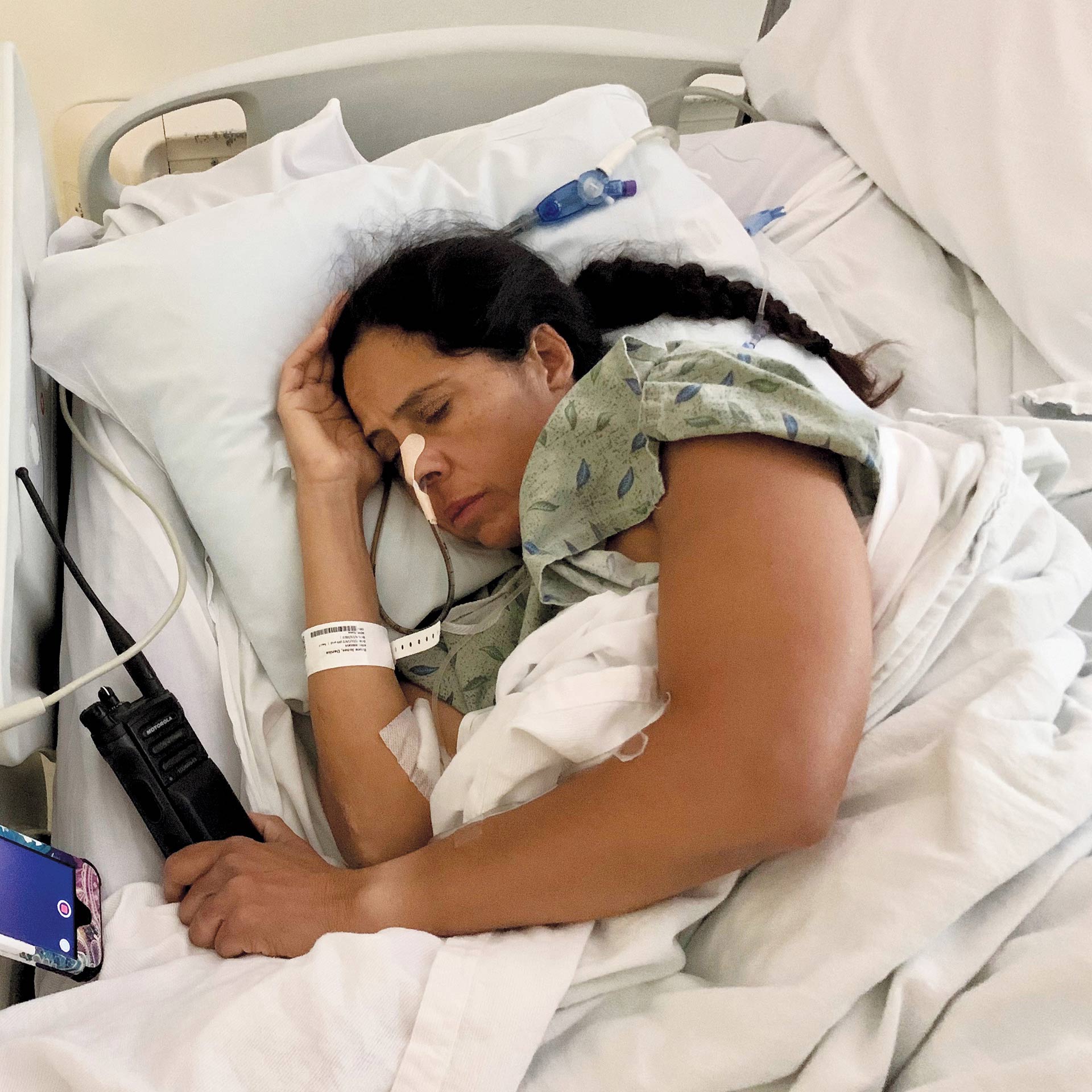 The female drove away, but he had her phone. She then drove to Cave Creek Road and Beardsley to call the police. The female and Denise went inside the gas station and got her phone number because she didn’t know the number but used to work there, so they went inside to ask the on-duty clerk for the number. They exited the store into the parking lot, and Denise was going to give the phone number to Officer Toma for a means of communication at the residence.
The female drove away, but he had her phone. She then drove to Cave Creek Road and Beardsley to call the police. The female and Denise went inside the gas station and got her phone number because she didn’t know the number but used to work there, so they went inside to ask the on-duty clerk for the number. They exited the store into the parking lot, and Denise was going to give the phone number to Officer Toma for a means of communication at the residence.
The female then told Denise, “There he is.” Denise immediately noticed a motorcycle on Beardsley. Remembering that he normally rides a motorcycle, she was focused on the motorcycle when she asked the female, “on the motorcycle?” The female said, “No, in the Prius.” Denise was scanning for the car when suddenly a Prius came into the parking lot quickly. Denise saw the male driving, and his hands appeared in the air as he was animated talking to himself. The passenger-side window was down only a few inches. Denise yelled to Officer Toma, “There he is!”
Quickly, the passenger-side window of the Prius rolled down as she was in the middle of the gas station. When the vehicle stopped, Denise remembers immediately feeling a burning pain in her left hip. This is when time slowed down and she realized a muzzle flash had preceded the burning and now the barrel of a gun, barely visible, was pointed at her. “Fuck he just shot me,” she realized.
Her legs buckled, and she was now lying on the ground on her left side. She said that she saw Officer Toma quickly react by drawing his gun and returning fire, but she did not hear any gunfire, though she did not lose consciousness. She couldn’t physically roll over and draw her gun in time and immediately went into survival mode. Officer Toma then came over to her and started to pull on her to get her to safety. Her leg was burning with excruciating pain, and her left leg was shaking, and she couldn’t stop it.
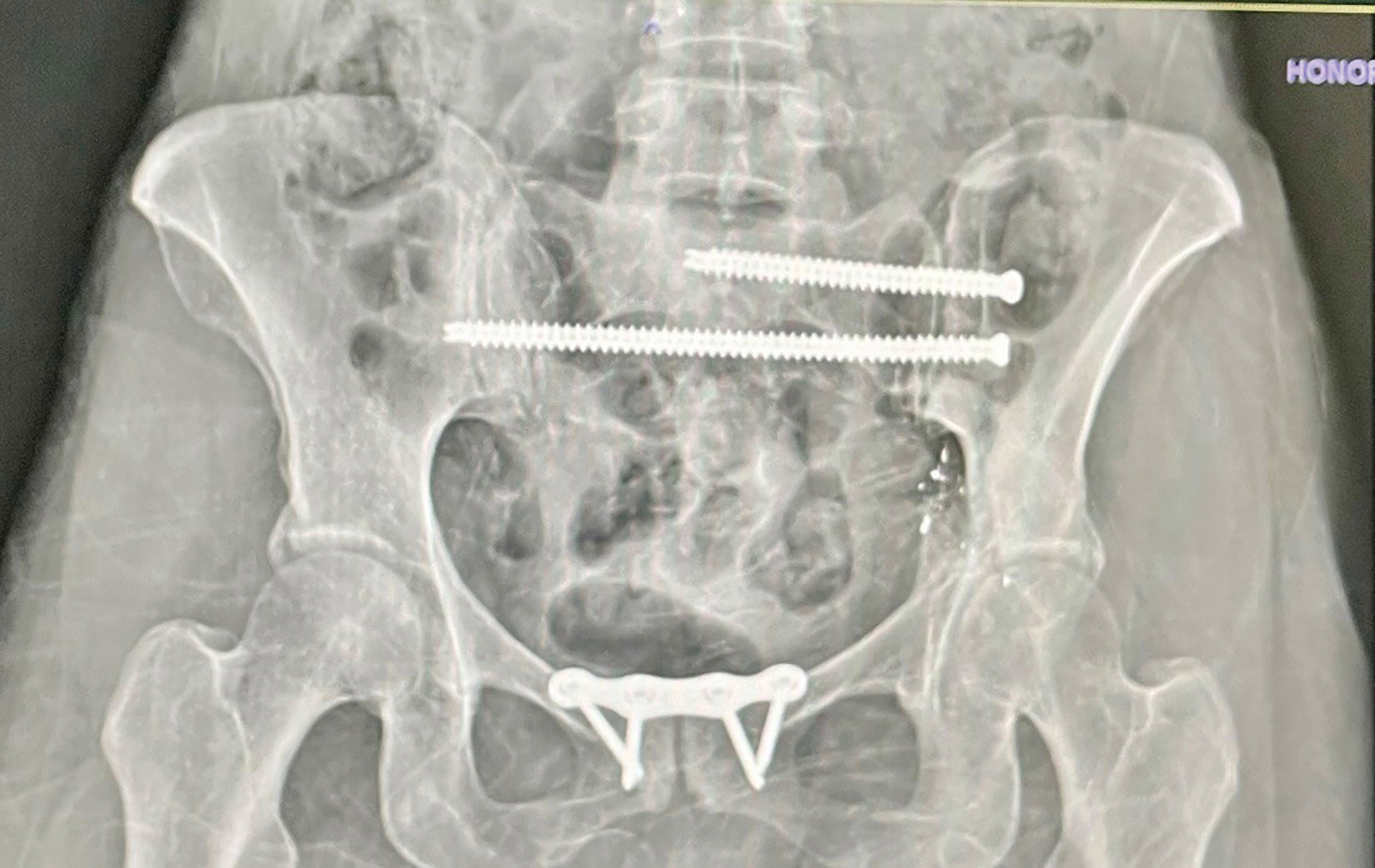 Staying Calm in the Face of Adversity
Staying Calm in the Face of Adversity
She tried to put out the 999 (officer down) over the radio, but it didn’t go out. Officer Toma was able to put out on the radio a 999. While lying on the ground in the parking lot, multiple police units started to arrive on the scene. She knew she had to do her best to stay calm and just wait for the fire department. Most of her focus was on her breathing, which helped her remain calm. Denise had just got a new ballistic vest and remembered it feeling stiff and tight, making her feel claustrophobic. She was told to keep her vest on in case it was providing compression on any gunshot wounds.
The fire department arrived, and they immediately put Denise on a stretcher and loaded her into the ambulance (load and go). Fire removed her vest along with her duty belt to treat her injury. She was placed onto her left side so her body weight could keep pressure on the wound near her left hip. She vividly remembers her left leg kept shaking, and she could not make it stop. Sergeant Linda Miller was also in the back of the ambulance, applying pressure to the wound with gauze. Fire told Sergeant Miller, “If she isn’t screaming, then you’re not pushing hard enough.” That moment will always remain in her memory.
Fire said that her blood pressure was 120/70 and her heart rate 61 beats per minute. Denise believes she was able to remain so calm because she’s in good shape and knew that she was going to survive. Her memory of most of the ride to the hospital is vague. They arrived at the John C. Lincoln Medical Center emergency room and Fire wheeled her inside quickly. The last thing that she remembers was going into the operating room and the nurse asking “pre-op” questions before she was put under. She then fell asleep. Incidentally, Denise candidly remarked, “You’d never expect to get ambushed at 10:30 in the morning in north Phoenix.”
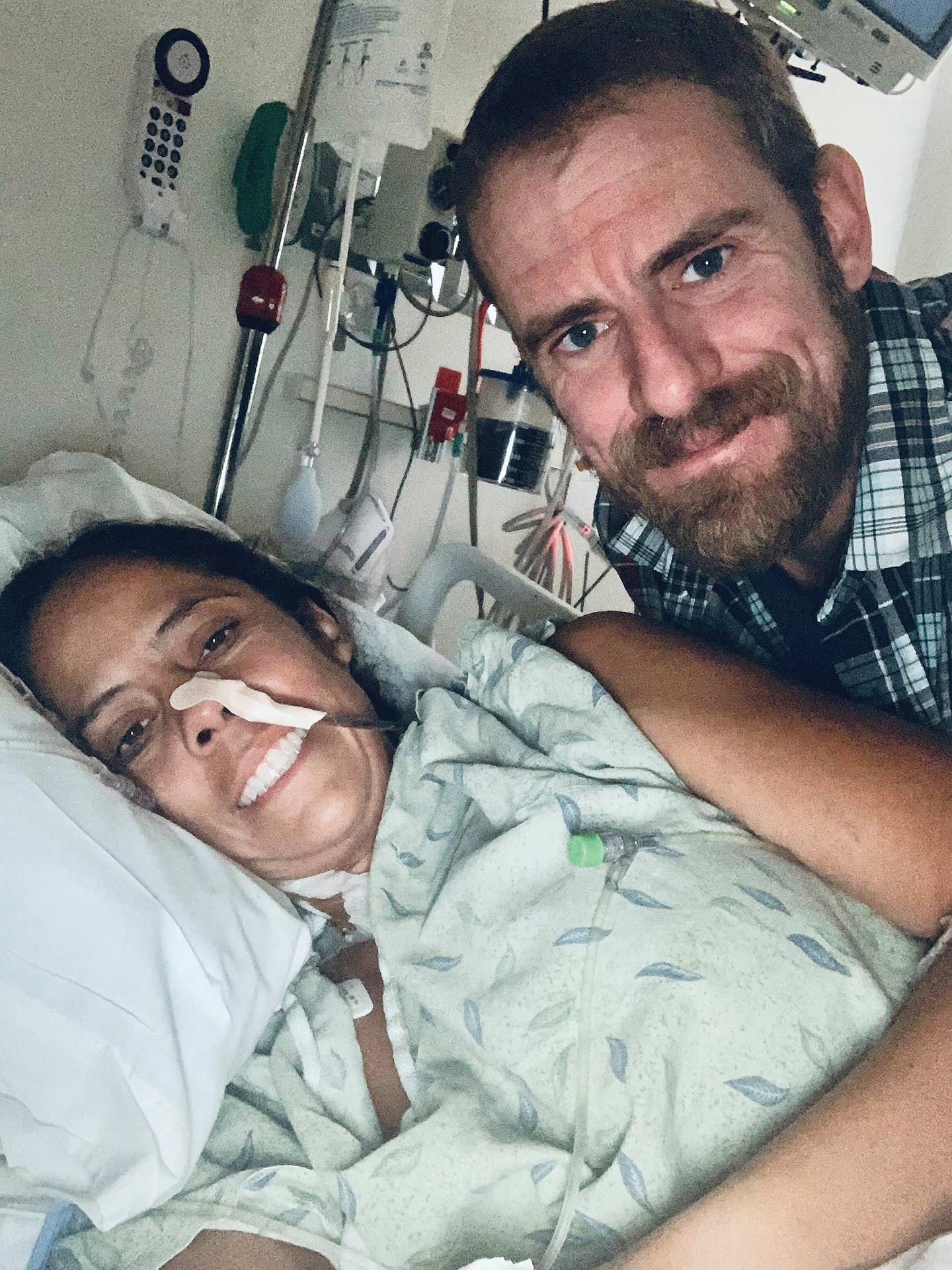 Waking Up After Surgery
Waking Up After Surgery
The surgery was complete, and Denise was taken up to ICU. When she awoke, her husband, Chris, was by her side. The doctor later entered the room and said that they had performed an exploratory laparotomy, which consisted of them opening up her abdomen in order to dissect her bowel. This was done to stop the bleeding and to find the bullet and any fragments. They said that she had a fractured acetabulum (hip socket). Because of the abdominal surgery, she could not eat or drink anything for five days. “That was terrible — my throat was so dry, and it felt like sandpaper swallowing,” Denise remembers.
Her abdominal core hurt so bad every time she had to move. All she could do was lie there trying not to laugh, cry or even cough so it didn’t hurt. She was cleared to start physical therapy the next day and remembers thinking back to how painful it was just to sit up. Therapy was very challenging because she was hopping on her right leg since she wasn’t allowed to use her left leg. The right leg needed to take all the load-bearing weight while her pelvis healed.
The surgery left her with a 10-inch incision opening down her abdomen, which was closed with staples. It extended from the bottom of her sternum to the waistline. While in the hospital, Chris was talking to their young son, Kemper, on Facetime, and he turned the phone around to Denise lying in bed.
Kemper asked her, “What is really going on?” Initially, they had told him that she was injured at work and was in the hospital. Denise said that despite his young age, “He is a very smart kid” and began to ask a lot of questions. She would have to tell him the truth, and so she explained that she was shot by a bad guy, and that’s why she was in the hospital with tubes coming out of her. That was an emotional moment for Denise having to tell her child that she was shot, but she knew that seeing her on Facetime reassured him that she was alive and going to be OK. Kemper did, however, became upset knowing that his mother was not going to be home for a while — they have a very close relationship.
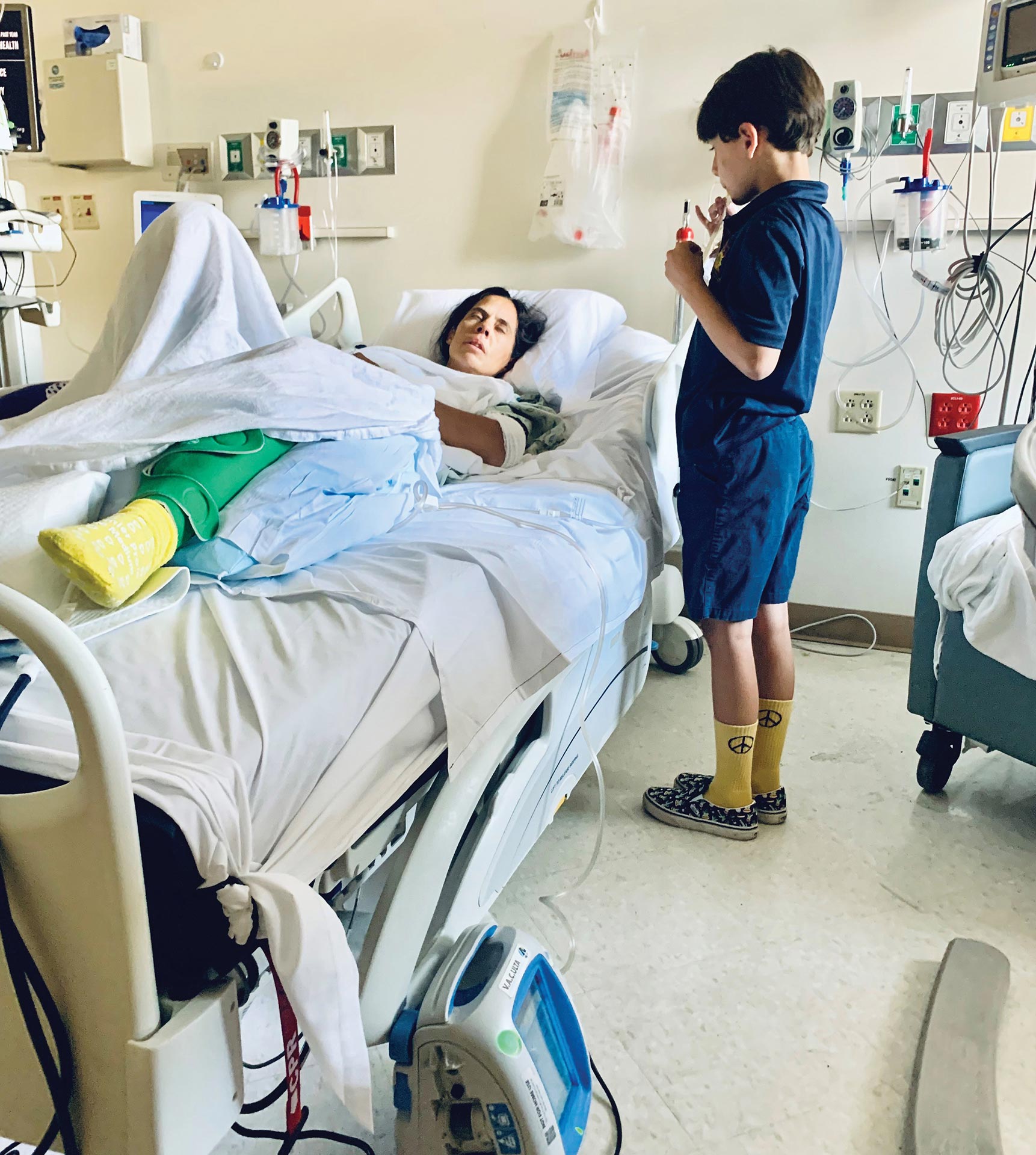 The Road to Recovery
The Road to Recovery
Denise would stay in the ICU at the hospital for another week until being discharged to a medical rehabilitation facility. During discharge and medical transport to the next facility, she was provided with a “police escort” by her close co-workers. She remained in the rehab facility for two more weeks.
The struggle of healing continued in rehab, and she developed an infection in the gunshot wound site that had to be treated. This consisted of draining the fluid and cleaning the wound. The day came for her to be discharged from rehab, and to her surprise, she was greeted by police officers and rehab staff members cheering as she was pushed out of the building in a wheelchair. She was overcome with emotion and started to cry. “Thank you to everyone who was there to support me,” she says.
She started going to physical therapy soon after being released. “It was difficult going from a wheelchair to a walker and then to a cane,” Denise says.
In June, her doctor said that she had movement in her pelvic bones. She could feel the bones moving in her pelvis while lying down and turning over. This required another surgery called open reduction and internal fixation (ORIF). Her second surgery was in September, adding two screws and a metal plate to stabilize the two pelvic bones together so they could heal correctly.
Today, she is now fully weight-bearing on her left leg, and since January of this year, she has been walking without assistance. She told me that she still has some lasting nerve issues in her leg. There is some lack of movement in her quadricep muscle, along with sensory issues of numbness, tingling and temperature sensation. The most frustrating struggle right now is not being able to climb stairs as well as upward and downward flexion of the left leg. She may require another surgery to correct the nerve issue later this year.
The incident was two days before her husband, Chris’ birthday and just before Easter. Denise became very emotional talking about what was the hardest thing to overcome during her recovery. If you know Denise, she is an athlete and has competed in seven Ironman races. She finds that running and training are therapeutic. “Not being able to run is really hard for me,” Denise says. Her plan when she retires was to go back to training hard for Ironman and compete in races.
She is happy to be alive today and grateful to Officer Toma, who she credits for saving her life. She is further indebted to everyone who helped locate the suspect (who was ultimately arrested). “Everyone who called, visited, texted and were there for me, thank you!” Denise says.
Denise believes it’s important to stay in shape and focus on your health. She credits her survival and recovery, both mentally and physically, to being in shape. “I’m not angry and will not dwell on what happened because it is not productive.” She has now found other ways to exercise to stay healthy while recovering, like swimming (even though this was her least favorite discipline in the triathlon).
Denise’s husband Chris also works for the Phoenix Police Department. I met with Chris separately to talk about what happened.
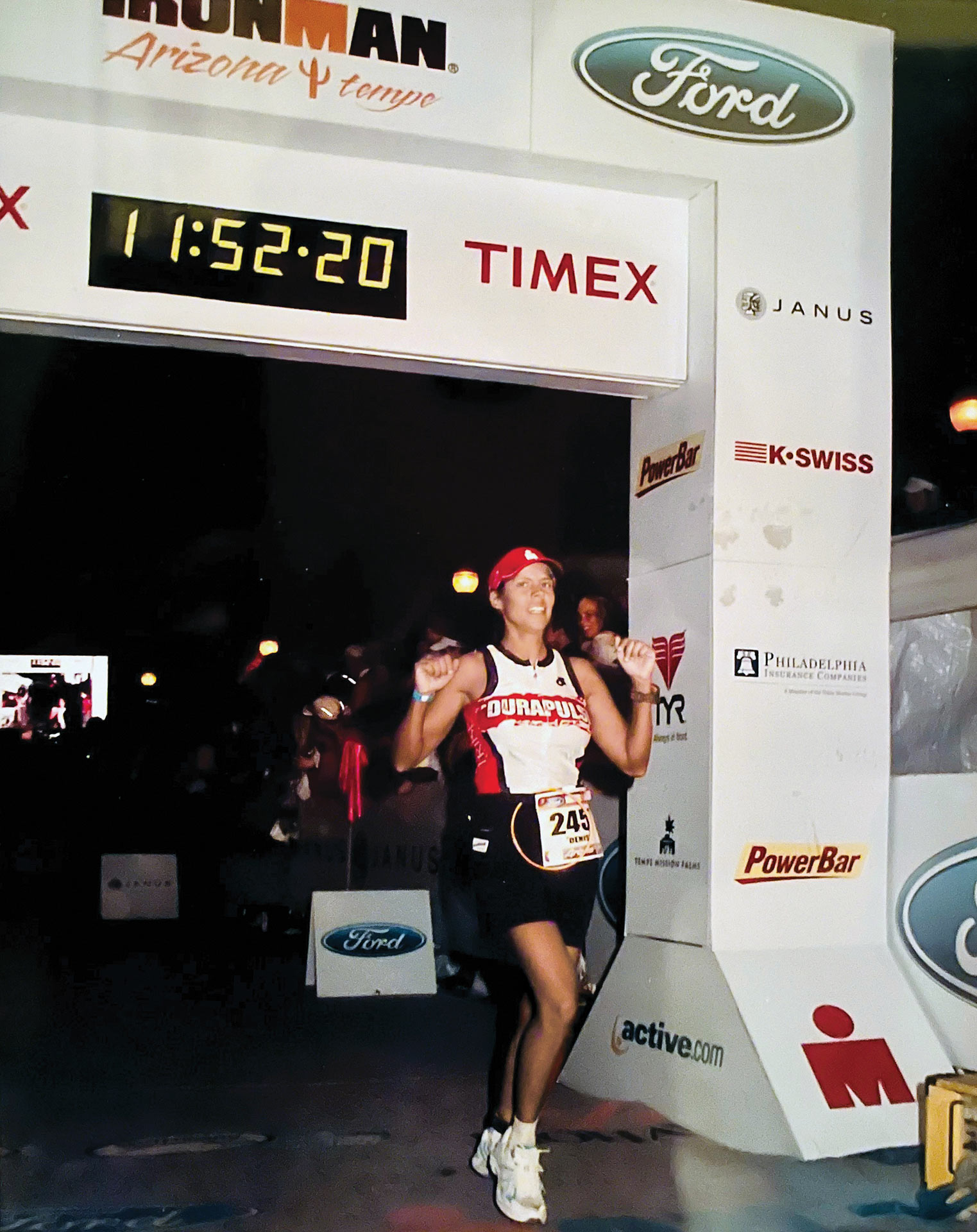 Chris’ Account
Chris’ Account
On the day of the incident, Chris was sleeping because he was on the night shift. His phone started to get text “dings” and phone calls. Being so tired, he finally looked and answered one of the calls. One of the messages he received was about a female officer being shot, and he recalls “putting two and two together” that it was, in fact, Denise. He answered the next phone call, and that person advised him that Denise was involved and that he needed to get to the hospital immediately.
“What Am I Going to Tell Our Son?”
Chris initially paused for a moment, thinking “What am I going to tell Kemper about his mother being dead?” He answered another telephone call that put him at ease — “Denise is alive.” Chris quickly started to notify Denise’s family to help make arrangements to watch Kemper. Chris drove himself to the hospital, and when he arrived, he said it was so comforting to see familiar faces from PLEA and numerous other co-workers who were there for support. The hospital staff briefed him on Denise’s condition. He was told that she was shot in the waist and the hip, requiring them to take her to surgery right away.
Denise got out of surgery, and Chris was waiting for her upstairs in the ICU room. While Denise was not awake, Chris was trying to catch up with the incoming text messages and letting everyone know that she was going to be OK. It was a nice distraction to keep his mind busy, with Denise’s phone in one hand and his in the other hand, giving everyone updates on her status.
On the fifth day of Denise’s recovery in the hospital, she asked Chris for a cup of water, and he responded in his typical joking fashion, “What’s wrong with your legs?” Even though it hurt to laugh, Denise smiled just knowing things hadn’t changed much. He then got up and returned with the water.
Chris is very thankful for the police department taking care of their family, and they even assigned Chris to home to help take care of Denise.
There was a multiagency, statewide manhunt, which ended after the suspect was taken into custody days later and booked into jail.
 Once again, the Arizona Police Association (APA), in partnership with our member associations from across the state, is engaged in representing Arizona law enforcement and public safety officers at the State Capitol.
Once again, the Arizona Police Association (APA), in partnership with our member associations from across the state, is engaged in representing Arizona law enforcement and public safety officers at the State Capitol.
The 56th Legislature session began on January 10, 2023, and as of this writing, 1,625 bills have been introduced. Below are APA-sponsored bills, as well as a few others we have been actively working on. The list below are primary bills we have been engaged with, but it is not a complete list of all the bills the APA is monitoring.
HB 2002: DOC officers; personnel system; covered: This APA-sponsored bill will make Arizona correction supervisors up to the rank of captain “covered” employees again, providing them with “just cause” employment due process.
The bill was passed out of the House Military Affairs and Public Safety (MAPS) Committee on January 23 on a vote of 14–1.
HB 2336: tuition; family; post-traumatic stress; suicide: This APA-sponsored bill will provide tuition at the state universities and community colleges for the surviving dependents of police officers, firefighters and veterans who suffer from duty-related PTSD and subsequently commit suicide.
This bill was passed out of the House MAPS Committee on February 6 on a unanimous 15–0 vote. It will next move to the rules committee and then onto the floor for a full vote of the House.
HB 2418: law enforcement; response times; requirements: This bill would become a “strike everything” and would create a study committee to standardize the process of measuring emergency police response times and focus on the recruitment and retention of Arizona law enforcement. It’s scheduled for House MAPS on February 13.
HB 2478: aggravated assault; law enforcement employees: This APA-sponsored bill would protect non-sworn police employees by covering them with increased aggravated assault charges if assaulted in the course of their duties. This bill was passed out of the House MAPS Committee on a 15–0 vote on February 6.
HB 2484: failure to return vehicle; repeal: This APA-sponsored bill would repeal the failure to return vehicle-security interest law (A.R.S. 13-1813) if passed. Currently, under this law, the police are required to act as the repo man if someone fails to make their car payments. This bill is scheduled for House MAPS on February 13.
HB 2485: aggravated assault; ambush; police; classification: This bill would increase the felony classification for ambush assaults on police officers. It’s scheduled for the House MAPS Committee on February 13.
SB 1003: traffic violation; identification: This APA-sponsored bill would require a non-operator (pedestrian, bicyclist, passenger) violator of the traffic code, Title 28, to verbally provide their true name, date of birth and address to the officer. This bill was not scheduled for the committee, but we are looking for a striker to move the bill, mostly in the House.
SB 1301: law enforcement investigations; applicability: This APA-sponsored bill would retroactively apply to all disciplinary investigations not in compliance with 38-1110. This gives the agency one year to finish investigations that are older than 18 months, after which they are dismissed. This is scheduled for Senate MAPS on February 15.
